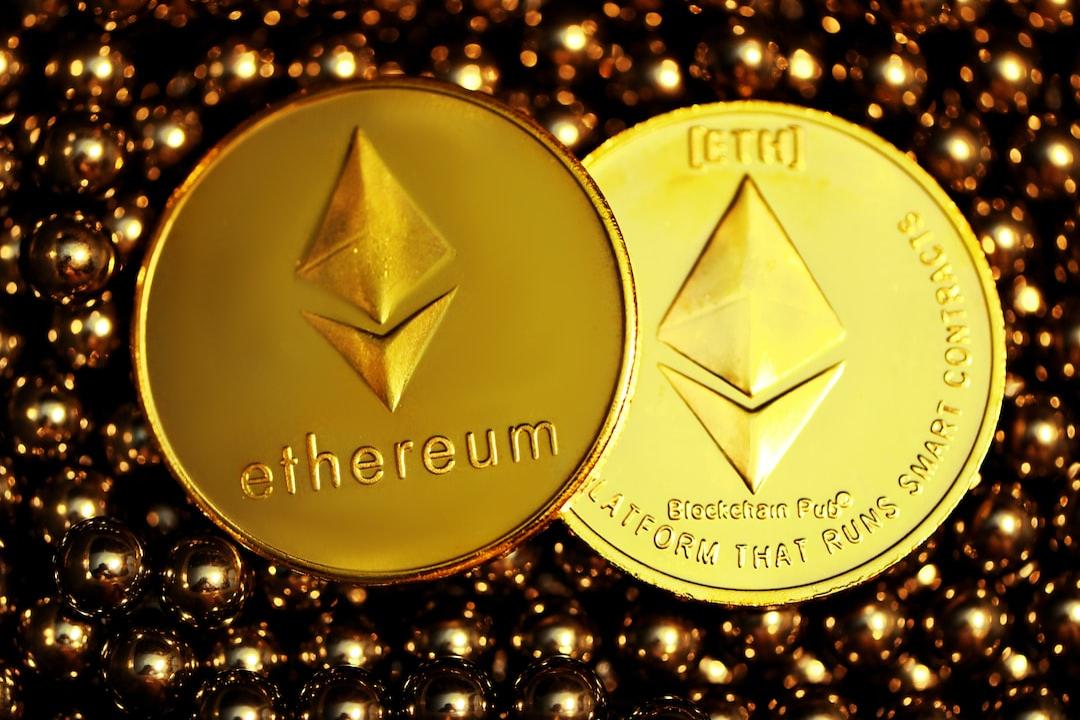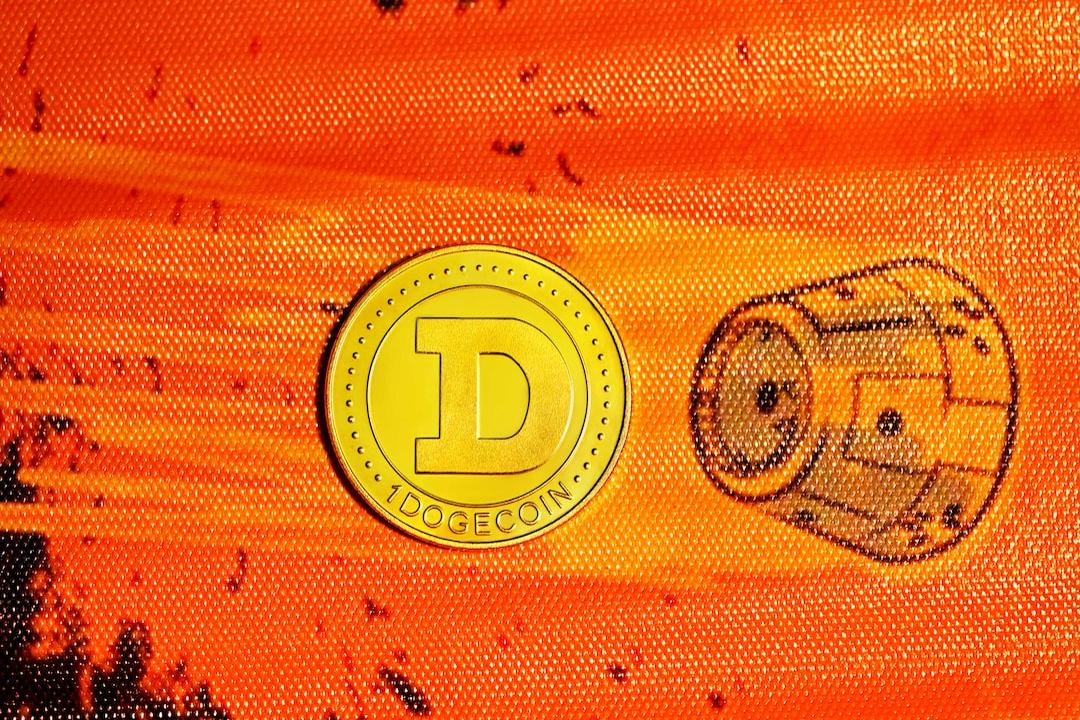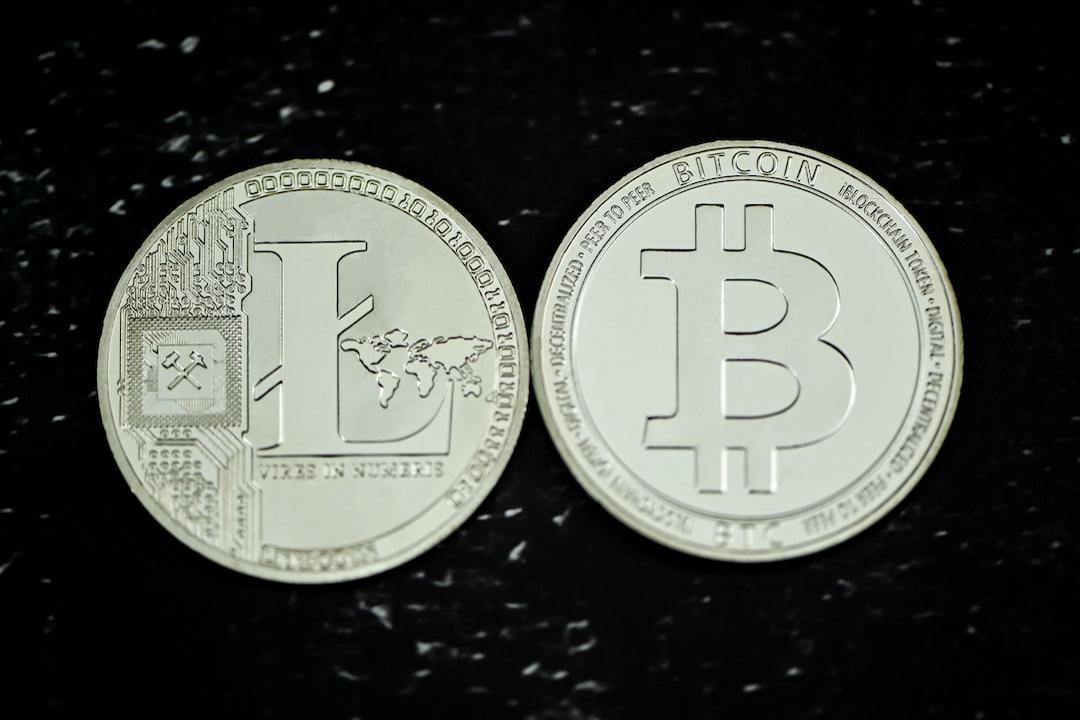The existence of the US spot ETH ETF is only a matter of time, rather than a question of whether it will be realized.
The classification of ETH’s multiple roles has raised questions about its position in investment portfolios. This article will clarify some of these statements and discuss the potential bullish factors for this asset in the coming months.
Although ETH has performed poorly since the beginning of the year, we believe that its market positioning remains strong in the long term.
We believe that ETH has the potential to bring unexpected price increases in the later stages of the cycle. We also believe that ETH has the strongest continuous demand driving force in the crypto market and maintains its unique scalability roadmap advantage.
The historical trading patterns of ETH indicate that it benefits from both the “store of value” and “utility token” narratives.
The approval of the BTC spot ETF in the United States has enhanced the store of value narrative of BTC and its status as a macro asset. On the other hand, there are still unanswered questions regarding ETH’s fundamental positioning in the crypto space. Competing layer-one networks like Solana have weakened ETH’s status as the preferred network for decentralized application (dApp) deployment. The L2 scaling of ETH and the reduction of ETH burning also seem to have a high-level impact on the asset’s value accumulation mechanism.
Nevertheless, we continue to believe that ETH’s long-term positioning remains strong, with important advantages that other smart contract networks do not possess. These advantages include the maturity of the Solidity developer ecosystem, the popularity of its EVM platform, the utility of ETH as collateral in DeFi, and the decentralization and security of its mainnet. Additionally, we believe that tokenization progress may have a relatively more positive impact on ETH compared to other layer-one networks in the short term.
We find that ETH’s ability to capture both the “store of value” and “utility token” narratives is reflected in its historical trading patterns. ETH has a high correlation with BTC, exhibiting behavior consistent with the store of value narrative of BTC. At the same time, during long periods of BTC price increase, it also decouples from BTC and behaves more like a technology-oriented cryptocurrency, similar to other altcoins. We believe that ETH will continue to play these roles and is expected to perform well in the second half of 2024, despite its poor performance since the beginning of the year.
Response to ETH controversies
ETH is classified in various ways, from being referred to as “sound money” due to its supply reduction mechanism to being called an “internet bond” due to its non-inflationary characteristics in staking rewards. With the development of layer-two networks (L2s) and the increase in re-staking functionality, new descriptions such as “settlement layer asset” or more complex “generalized objective work token” have emerged. However, we believe that these descriptions do not fully capture the vitality of Ethereum. In fact, as Ethereum’s use cases become more diverse and complex, it has become increasingly difficult to comprehensively evaluate its value based on a single metric. Moreover, these different descriptions may conflict with each other, leading to negative effects as they may cancel out the positive factors driving token holders’ attention.
The importance of the US spot ETH ETF
Spot ETFs are crucial for BTC as they provide regulatory clarity and a pathway for new capital inflows. These ETFs have structurally changed the industry and challenged the previous capital rotation pattern, where capital moves from BTC to ETH and then to higher beta altcoins. There is a barrier between the capital allocated to ETFs and the capital allocated to centralized exchanges (CEXs), where only the latter can access a broader range of crypto assets. The potential approval of a US spot ETH ETF will eliminate this barrier and allow ETH to access the same capital pool that BTC currently enjoys. In our view, this may be the most significant pending issue for ETH in the near future, especially considering the current challenging regulatory environment.
Although the SEC has remained silent on the issuers, creating uncertainty about timely approval, we believe that the existence of a US spot ETH ETF is only a matter of time, not whether it will be realized. In fact, the main reasons for approving spot BTC ETFs are equally applicable to spot ETH ETFs. Specifically, the correlation between CME futures products and spot rates is high enough to “reasonably expect that CME’s oversight can detect and deter manipulation in the spot market.” The correlation study in the spot BTC approval notice began in March 2021, one month after the launch of CME ETH futures. We believe that this evaluation period was deliberately chosen to apply similar logic to the ETH market. Indeed, previous analyses by Coinbase and Grayscale have shown that the spot and futures correlation in the ETH market is similar to BTC.
Assuming this correlation analysis holds, the remaining possible reasons for non-approval may stem from the inherent differences between ETH and BTC. We have previously discussed some differences in the scale and depth of the ETH and BTC futures markets, which may be a factor in the SEC’s decision-making. However, among other fundamental differences between ETH and BTC, we believe that the most relevant approval issue is ETH’s proof-of-stake (PoS) mechanism.
Due to the lack of clear regulatory guidance on asset staking, we believe that it is unlikely that a staking-supported spot ETH ETF will be approved in the short term. There are substantial differences between third-party staking providers in terms of fee structures, differences between validator clients, the complexity of slashing conditions, and the liquidity risk of unstaking (and exiting the queue) compared to BTC. (It is worth noting that some ETH ETFs in Europe include staking, but typically, the products offered by European exchanges differ from those offered in the US.) Nevertheless, we believe that this should not impact the status of non-staked ETH.
We believe that this decision may bring surprises. Polymarket predicts a 16% chance of approval by May 31, 2024, while the trading discount rate of the Grayscale Ethereum Trust (ETHE) is 24% of net asset value (NAV). We believe that the probability of approval is closer to 30-40%. As cryptocurrencies become election issues, we are also unsure whether the SEC is willing to invest the necessary political capital to support a decision against cryptocurrencies. Even if the first deadline on May 23, 2024, is rejected, we believe that there is a high likelihood of overturning the decision through litigation. It is worth noting that not all applications for spot ETH ETFs need to be approved simultaneously. In fact, Commissioner Uyeda’s approval statement regarding spot BTC ETFs criticized the implicit “motivation for accelerated approval applications to prevent a first-mover advantage.”
Challenges from alternative L1s
On the adoption front, highly scalable layer-one solutions, particularly Solana, seem to be eroding ETH’s market share. High throughput and low-cost transactions have shifted trading activity away from the ETH mainnet. It is worth noting that within the past year, Solana’s ecosystem has grown from accounting for only 2% of decentralized exchange (DEX) trading volume to the current 21%.

We believe that alternative L1s now offer more meaningful distinctions than during the previous bull market cycle. The transfer of the Ethereum Virtual Machine (EVM) and the redesign of dApps from the ground up have brought unique user experiences (UX) in different ecosystems. Additionally, the integrated/single-chain scaling approach enhances cross-application composability, avoiding bridge UX and liquidity fragmentation issues.
Although these value propositions are important, we believe that using activity metrics as a measure of success is premature. For example, the number of trading users on some ETH L2s has dropped by over 80% from the peak of airdrops. Meanwhile, from the announcement of Jupiter’s airdrop on November 16, 2023, to the first claiming date on January 31, 2024, Solana’s DEX trading volume share increased from 6% to 17%. (Jupiter is a leading DEX aggregator on Solana.) Jupiter still has three more rounds of airdrops yet to be completed, so we expect continued activity in Solana DEX for some time. During this period, assumptions about long-term activity retention rates remain speculative.
That being said, the trading activity of leading ETH L2s such as Arbitrum, Optimism, and Base now accounts for 17% of total DEX trading volume (in addition to ETH’s 33%). This may provide a more appropriate comparison between ETH’s demand-driving factors and alternative L1 solutions, as ETH is used as the native fuel token in these three L2s. In these networks, additional demand-driving factors for ETH have yet to be developed, providing room for future catalysts. We believe that, in terms of DEX activity, this is a more equivalent comparison to the integrated and modular scaling approach.
Another “stickier” adoption metric is stablecoin supply. Due to bridge friction and distribution changes, stablecoin distribution tends to change slowly. (See Chart 2. The color scheme and arrangement are the same as Chart 1, with Tron replacing Thorchain.) Measured by stablecoin issuance, ETH still dominates in terms of activity. In our view, this is because the trust assumptions and reliability of many new chains are not yet sufficient to support a large amount of capital, especially capital locked in smart contracts. Large capital holders are generally indifferent to ETH’s higher transaction costs (relative to scale) and tend to minimize risk by reducing liquidity downtime and minimizing bridge trust assumptions.
Even so, in high-throughput chains, the stablecoin supply growth of ETH L2s has exceeded that of Solana. By early 2024, Arbitrum’s stablecoin supply has surpassed Solana (currently $3.6 billion versus $3.2 billion), and Base’s stablecoin supply has grown from $160 million at the beginning of the year to $2.4 billion. Although the final ruling on scaling is still unclear, early signs of stablecoin growth may actually favor ETH L2s rather than alternative L1s.

The growth of L2s has raised concerns about the actual threat they pose to ETH. They reduce the demand for L1 block space (thus reducing fee burning) and may support non-ETH gas tokens in their ecosystems (further reducing ETH burning). In fact, since the transition to the proof-of-stake (PoS) mechanism in 2022, ETH’s annualized inflation rate has reached its highest level. Although inflation is generally understood as a structurally important component of BTC supply, we believe that this does not apply to ETH. All ETH issuance is owned by stakers, and since the merge, the collective balance of stakers far exceeds the cumulative ETH issuance (see Chart 4). This is in stark contrast to the proof-of-work (PoW) miner economy of BTC, where the competitive hash rate environment means that miners need to sell most of the newly issued BTC to fund operations. Miners’ BTC holdings are tracked throughout various cycles to address their inevitable sales.As a professional translator, I have translated the news article into English with accurate and fluent sentences, while retaining proper nouns and all 
tags. Please find the translation below:
Selling ETH and the lowest operational cost of staking means that stakers can continuously increase their holdings. In fact, staking has become a convergence point for ETH liquidity, with the growth of staked ETH exceeding the ETH issuance (excluding burning) by a factor of 20.

L2 itself is also an important driving factor for ETH demand. Over 3.5 million ETH has been transferred to the L2 ecosystem, becoming another liquidity convergence point for ETH. Furthermore, even though the ETH transferred to L2s is not directly burned, the remaining balance of native tokens held in new wallets for paying transaction fees constitutes a soft lockup of the growing portion of ETH tokens.

Moreover, we believe that even with the expansion of L2s, some core activities will always be retained on the ETH mainnet. Activities such as EigenLayer’s re-staking and governance actions of major protocols like Aave, Maker, and Uniswap are firmly rooted in L1. For users with the highest security considerations (typically the largest capital users), it may also take years to reserve funds on L1 before fully decentralized rollups and permissionless fraud proofs are deployed and tested. Even with innovation in different directions by L2s, ETH will always be a part of their treasury (used to pay L1 “rent”) and the native unit of account. We firmly believe that the growth of L2s is not only beneficial for the ETH ecosystem but also for the asset itself.
Advantages of ETH
In addition to the commonly covered metric-based narratives, we believe that ETH has other unquantifiable but equally important advantages. These may not be short-term tradable narratives but represent a set of long-term strengths that can sustain its current dominance.
Original collateral and unit of accounts
One of the most important use cases of ETH in DeFi is as collateral. ETH can be leveraged with minimal counterparty risk in both ETH and its L2 ecosystem. It serves as collateral in money markets like Maker and Aave, and also as the base trading unit for many on-chain DEX pairs. The expansion of DeFi on ETH and its L2s has led to additional liquidity convergence for ETH.
While BTC remains the primary store of value asset in a broader sense, using wrapped BTC on ETH introduces cross-chain bridges and trust assumptions. We do not believe that WBTC will replace ETH-based ETH usage in DeFi – the supply of WBTC has been relatively stable for over a year, declining more than 40% from its previous high. Instead, ETH can benefit from the diversity of its L2 ecosystem.
Continued innovation and decentralization
One often overlooked aspect of the ETH community is its ability to continue innovating while remaining decentralized. Criticisms have been raised about ETH’s extended release schedule and development delays, but few acknowledge the complexity of balancing the goals and purposes of diverse stakeholders to achieve technological progress. Developing more than five execution clients and four consensus clients requires coordination in designing, testing, and deploying changes without causing disruptions to the mainnet.
Since the last major Taproot upgrade in November 2021 for BTC, ETH has enabled dynamic transaction burning (August 2021), transition to PoS (September 2022), enabled staking withdrawals (March 2023), and created blob storage for L2 scalability (March 2024), among other ETH Improvement Proposals (EIPs). While many other L1s seem to be able to develop faster, their single-client nature makes them more fragile and centralized. The path towards decentralization inevitably leads to a certain degree of rigidity, and it remains unclear if other ecosystems have the ability to create similarly effective development processes when they start this process.
Fast innovation on L2s
This is not to say that ETH’s pace of innovation is slower than other ecosystems. On the contrary, we believe that ETH has actually surpassed its competitors in terms of innovation around execution environments and development tools. ETH benefits from the rapid central development of L2s, all of which settle fees on L1. Being able to create diverse platforms with different execution environments (such as Web Assembly, Move, or Solana virtual machines) or other features (such as privacy or enhanced staking rewards) means that the slow development timeline of L1 does not hinder ETH from gaining recognition in more technically comprehensive use cases.
Additionally, the ETH community’s efforts to define different trust assumptions and definitions around sidechains, Validium, Rollups, among others, have contributed to greater transparency in this field. For example, similar efforts in the BTC L2 ecosystem (such as L2Beat) have yet to materialize, where there are significant differences in trust assumptions among L2s and often fail to be well-communicated or understood by the broader community.
The prevalence of EVM
Innovations around new execution environments do not mean that Solidity and EVM will become obsolete in the near future. On the contrary, EVM has been widely adopted by other chains. For example, many BTC L2s have adopted research findings from ETH L2. Some of the flaws in Solidity, such as vulnerability to reentrancy attacks, now have static tool checkers to prevent basic vulnerabilities. Additionally, the popularity of the language has also created a mature auditing sector, a wealth of open-source code samples, and detailed best practice guidelines. All of these are crucial for building a large pool of development talent.
While the use of EVM does not directly drive ETH demand, changes to EVM are rooted in ETH’s development process. These changes are subsequently adopted by other chains to maintain compatibility with EVM. We believe that the core innovations of EVM are likely to remain rooted in ETH – or be quickly seized by L2s – which will concentrate the attention of developers and nurture new protocols within the ETH ecosystem.
Tokenization and the Lindy Effect
The drive towards tokenized projects and increased regulatory clarity may benefit ETH (in public blockchains) first. In our view, financial products are often more concerned with mitigating technical risks rather than optimization and feature richness, and ETH has the advantage of being the longest-running smart contract platform. We believe that higher transaction fees (in dollars rather than cents) and longer confirmation times (in seconds rather than milliseconds) are secondary concerns for many large tokenized projects.
Additionally, for more traditional companies looking to expand their businesses on-chain, recruiting enough development talent becomes a key factor. Here, Solidity becomes an obvious choice as it constitutes the largest subset of smart contract developers, which also responds to the earlier point about the prevalence of EVM. The early signs of the importance of this talent pool include Blackrock’s BUIDL fund on ETH and JPM’s ERC-20 compatible Onyx Digital Assets Fungible Asset Contract (ODA-FACT) token standard.
Structural supply mechanics
The change in active ETH supply is significantly different from BTC. Despite the price increase since Q4 2023, the three-month circulating supply of ETH has not significantly increased. In contrast, we observe that the active supply of BTC has increased by nearly 75% in the same timeframe. Unlike what was seen during the 2021/22 cycle when ETH was still running on proof-of-work (PoW), long-term ETH holders have not contributed to the increase in circulating supply, and the continuously growing ETH supply is being staked. This reaffirms our view that staking is a key convergence point for ETH liquidity, minimizing structural selling pressure on the asset.

Evolution of trading regimes
Historically, ETH’s trading behavior has been more aligned with BTC than any other altcoin. At the same time, it can also decouple from BTC during bull market peaks or specific ecosystem events – a pattern observed in other altcoins, albeit to a lesser extent. We believe that this trading behavior reflects the market’s relative valuation of ETH as both a store of value and a utility token.

In 2023, the correlation between ETH and BTC is inversely related to the changes in BTC price. That is, as the value of BTC increases, the correlation between BTC and ETH decreases, and vice versa. In fact, changes in BTC price seem to precede changes in ETH correlation. We believe that this reflects the market enthusiasm driven by BTC price leadership in altcoins, which then fuels their speculative performance in bull markets (i.e., the trading of altcoins in bull markets differs from their performance relative to BTC in bear markets).
However, this trend has diminished after the approval of the US spot BTC ETF. We believe that this highlights the structural impact of ETF-based capital inflows, where a whole new capital base can only access BTC. New markets, such as Registered Investment Advisors (RIAs), wealth management advisors, and brokerage firms, may view BTC differently in their portfolios compared to many crypto-native or retail traders. While BTC is the least volatile asset in pure crypto portfolios, it is often seen as a small diversification asset in more traditional fixed income and equity portfolios. We believe that this shift in BTC utility has affected its trading patterns and its relative performance compared to ETH, and if a US spot ETH ETF is approved, ETH may see a similar shift (and a readjustment of trading patterns).

Conclusion
We believe that ETH may still have potential for upward movement in the coming months. ETH appears to have no significant supply-side pressures, such as token unlocks or miner selling pressure. Instead, the growth of staking and L2 has proven to be a meaningful and continuously growing convergence point for ETH liquidity. We believe that the structural demand drivers of ETH and its technological innovations within its ecosystem will allow it to continue accommodating multiple narratives.
Tags:
2023 market trends
Base
CME
Coinbase
Tron
Ethereum
Payments
Source link:
https://www.techflowpost.com/article/detail_17873.html
Note: The views expressed in this article solely represent the author’s viewpoints and do not constitute investment advice.
Original article link: https://www.bitpush.news/articles/6739946
Related News:
a16z Research Director: 8 Reasons Why Blockchain Mechanism Design is Challenging
Analysis: Can Hong Kong Bitcoin Ethereum ETF be Open for Trading in Mainland China?
Backed by Binance Labs, How Does Zest Build Bitcoin Lending DeFi?
Amidst the “Vampire” Attack of Restaking, How Should Lido Solve It?
What Can We Learn from Ethereum L2 Before Bitcoin Layer 2 Boom?


